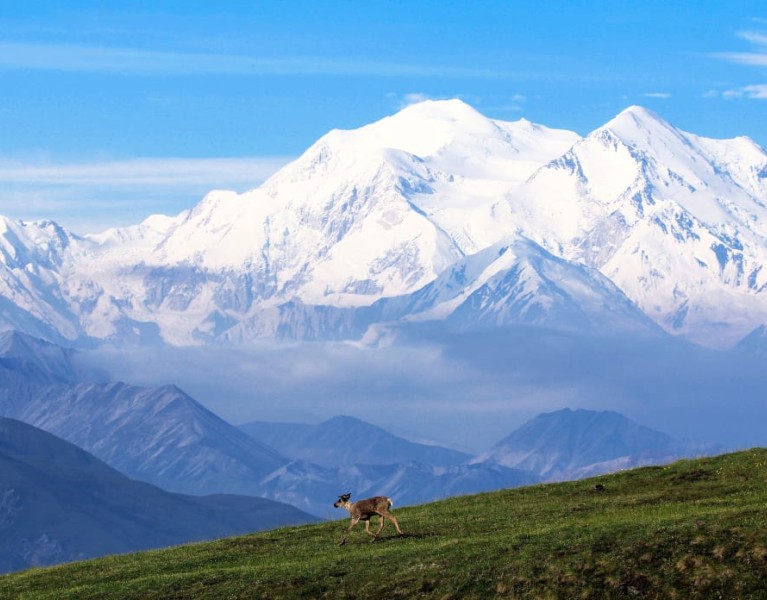
Insider's Guide to Denali National Park & Preserve
Table of Contents [Show]
Six million acres—and only a solitary road from which to explore it all. Alaska's Denali National Park conjures up images of primitive wilderness, extreme solitude, and unmatched natural beauty. It's a land where lush, green forests gently give way to rolling hills of colorful tundra, that collide abruptly with icy glaciers and unforgiving rock. Where the “Big 5” of wildlife: bears, moose, caribou and Dall sheep far outnumber humans, and unseen wolves howl in the distance. It's the third largest national park in the country, and the 20,322-foot peak is North America's tallest, and the third highest mountain of the seven continental highpoints.
Denali National Park has a somewhat complicated history. In 1897, a prospector named the mountain McKinley, after then-president William McKinley. Woodrow Wilson made it Mount McKinley National Park in 1917. Then in 1980, Mount McKinley National Park was combined with Denali National Monument, and became Denali National Park and Preserve, tripling its size. The word "Denali" means "the high one" in the Athabaskan language.
Despite its short primary visiting season, Denali packs a punch when it comes to foliage. Within the park's borders lie more than 1,500 species of vegetation, including 750 species of flowering plants, giving visitors treks through coniferous forests of black and white birch, wide-open meadows filled with wildflowers in every color, and plenty of edibles like raspberries, lingonberries, and Alaska's famous blueberries. If anything rivals the beauty of the peak and the blossoms, it's the abundant wildlife. Aside from the “Big 5,” fox, beaver, lynx, 166 species of birds, 14 species of fish and amazingly, one brave, hardy frog call the park home.
The park has a single, 92-mile-long road running east to west. During the summer, passenger cars are only allowed to mile 15 at the Savage River trailhead, or to mile 29 if camping at Teklanika campground. Walkers or cyclists can travel as far as they are willing and able. After mile 15, a stream of green buses constantly shuttle visitors through the park. It's a hop-on, hop-off system, the drivers will drop off or pick up anywhere along the road. Fees vary depending on distance, but give free use of the system during visitors' entire stay.
Classic Adventures
For those looking for a casual introduction to the park, head to Horseshoe Lake Trail. This popular trail begins right near the visitor's center, and wanders through aspen and spruce forest. Walk for 1.5 miles to an overlook above Horseshoe Lake, with a spectacular view of the Nenana river, the surrounding mountains and a good chance of spotting moose and beavers.
For an uptick in length and difficulty, seek out the Mount Healy Overlook Trail starting near the Murie Science and Learning Center at mile 1.4. It's about 5 miles long with a 1,700-foot elevation gain, with some very steep sections, taking about 3-4 hours. The reward is fantastic panoramic views of the entrance area, the Nenana River Valley, Healy Ridge, and on a clear day, Denali itself, looming above the tundra 80 miles to the southwest. The hike starts out in forest, then opens up, giving hikers their first taste of hiking across tundra.
For longer day hikes, or shorter backpacking trips, or if a long bus ride doesn’t sound fun, look at areas within the first 15 miles of the park road (units 1-5, 24-27), they're accessible from the free Savage River Shuttle.
Climbing Denali is one of the world's greatest mountaineering expeditions. While "only" the third highest summit of the 7 continental highpoints, it's infamous for some of the most ferocious weather on earth, and its extreme distance from the equator and low pressure from the Arctic oddly tricks the body into thinking it's higher. It's also "taller" than Everest, the summit stands about 18,000 feet above its base camp on the Alaskan plain, while elevation gain on Everest from base camp is 11,000 feet.
Other climbing options abound with about 70 alpine routes in the park. The Southwest Ridge of Mt. Francis is a classic moderate alpine route that can be done in a day. Expect steep snow and some 5.8 rock climbing.
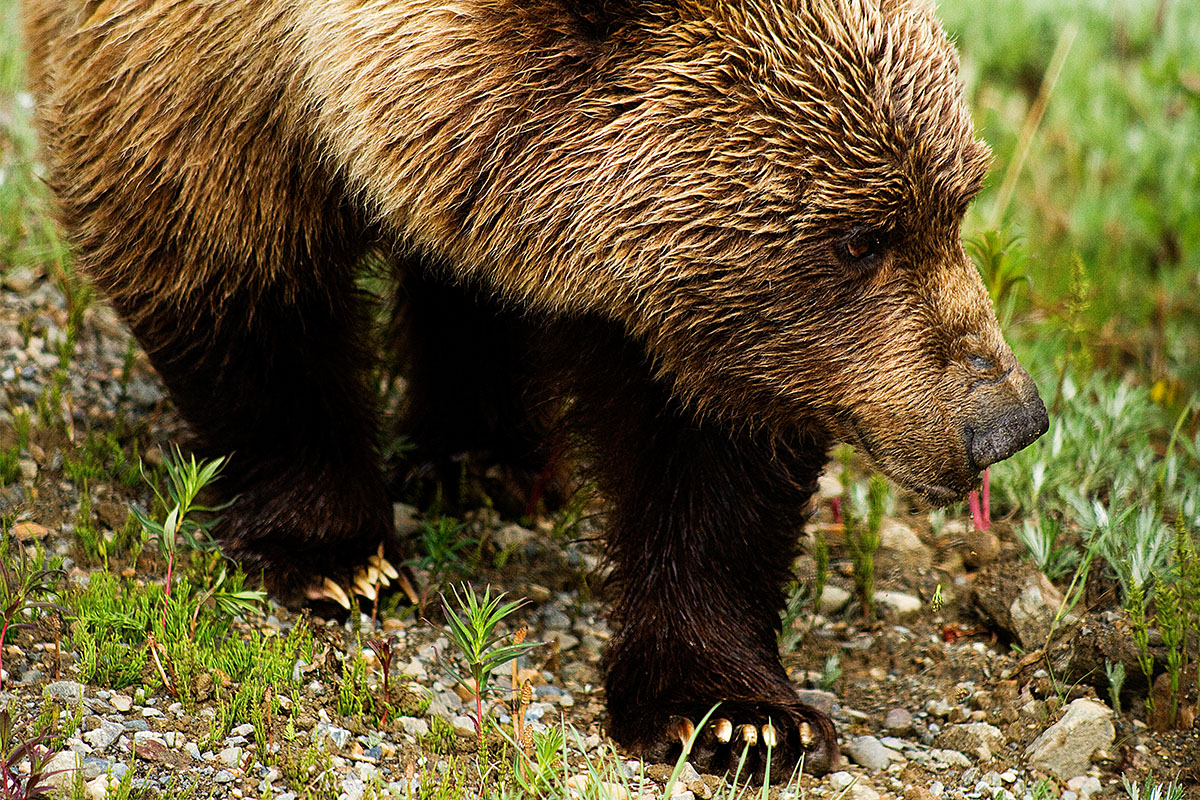
Classic Adventures
For those looking for a casual introduction to the park, head to Horseshoe Lake Trail. This popular trail begins right near the visitor's center, and wanders through aspen and spruce forest. Walk for 1.5 miles to an overlook above Horseshoe Lake, with a spectacular view of the Nenana river, the surrounding mountains and a good chance of spotting moose and beavers.
For an uptick in length and difficulty, seek out the Mount Healy Overlook Trail starting near the Murie Science and Learning Center at mile 1.4. It's about 5 miles long with a 1,700-foot elevation gain, with some very steep sections, taking about 3-4 hours. The reward is fantastic panoramic views of the entrance area, the Nenana River Valley, Healy Ridge, and on a clear day, Denali itself, looming above the tundra 80 miles to the southwest. The hike starts out in forest, then opens up, giving hikers their first taste of hiking across tundra.
For longer day hikes, or shorter backpacking trips, or if a long bus ride doesn’t sound fun, look at areas within the first 15 miles of the park road (units 1-5, 24-27), they're accessible from the free Savage River Shuttle.
Climbing Denali is one of the world's greatest mountaineering expeditions. While "only" the third highest summit of the 7 continental highpoints, it's infamous for some of the most ferocious weather on earth, and its extreme distance from the equator and low pressure from the Arctic oddly tricks the body into thinking it's higher. It's also "taller" than Everest, the summit stands about 18,000 feet above its base camp on the Alaskan plain, while elevation gain on Everest from base camp is 11,000 feet.
Other climbing options abound with about 70 alpine routes in the park. The Southwest Ridge of Mt. Francis is a classic moderate alpine route that can be done in a day. Expect steep snow and some 5.8 rock climbing.
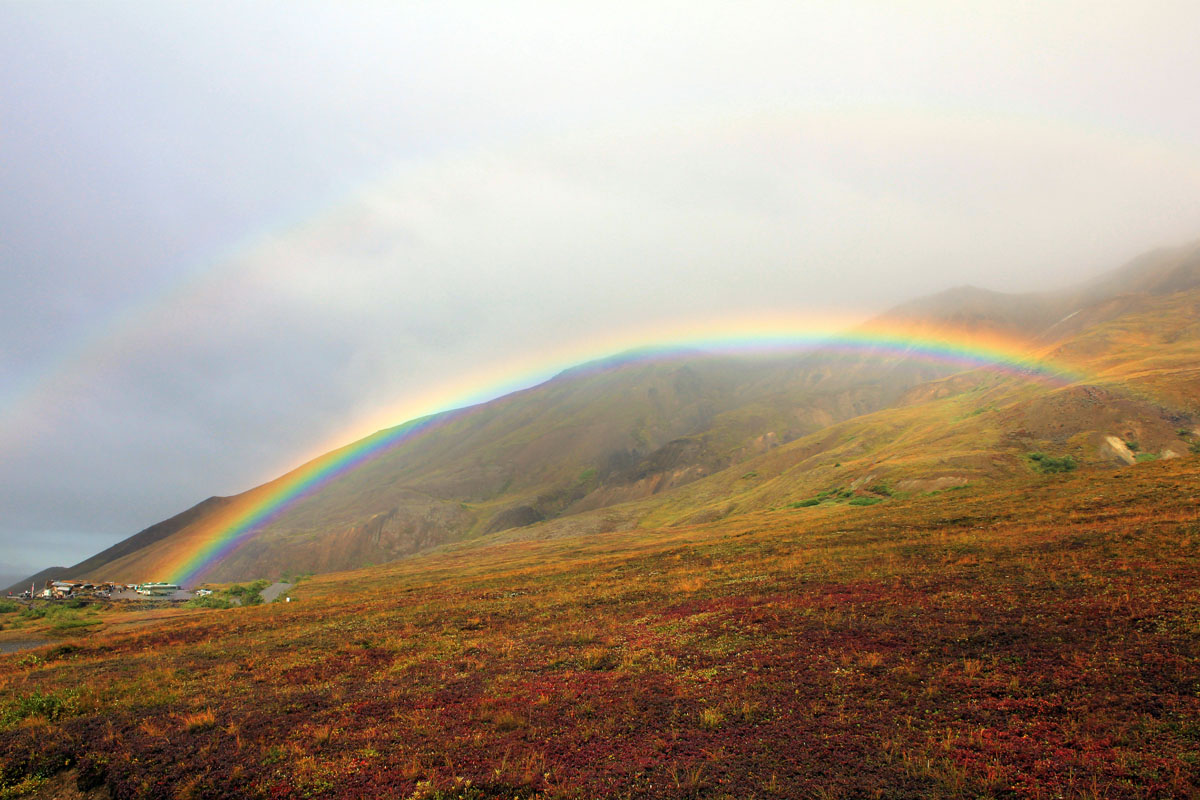
Secrets of the Park
Seeing the park from two wheels should be on the bucket list of any cyclist. After mile 15, the road turns to crushed gravel and traffic thins considerably. Bike racks are available at campgrounds, visitor centers, or the Toklat Road Camp, if camping in the backcountry, bikes must be 25 yards off the road and hidden from view. Bikepackers need a backcountry permit and a bear-resistant container, or they can just ride between campgrounds. The 92 miles to the end has almost 11,000 feet of total elevation gain. On a related note, many of the shuttle buses have bike racks. Water is only available at Eielson Visitor’s Center at mile 66, so pack a water filter. The park service begins plowing the road to mile 30 in late March, and the buses don't start running until May 20, a perfect time to enjoy traffic-free cycling.
Winter is a magical time to visit, with cross-country skiing, dog sledding, snowmobiling, winter camping, and even fat-biking. The road is only open up to about mile three, so if visitors want to get farther, they are on their own. The winter visitor center is open daily from 9am to 4:30pm and lends out snowshoes for free.
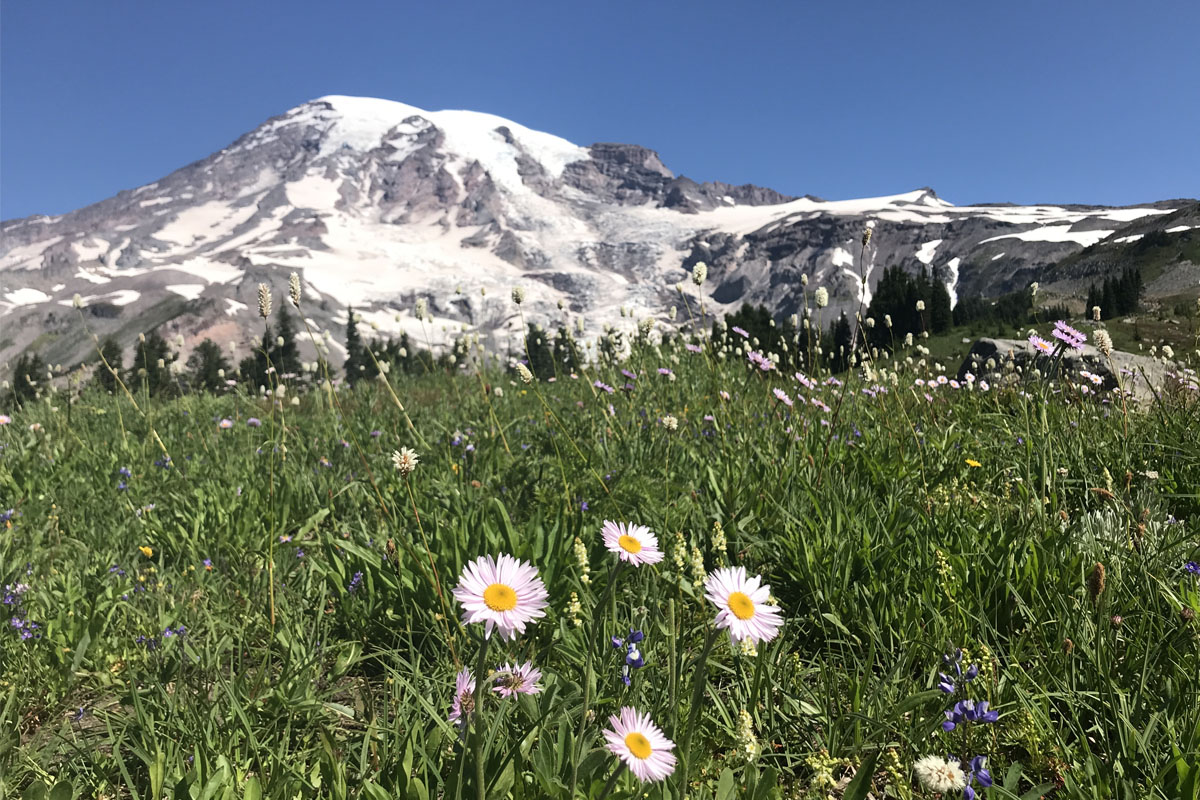
Immerse Yourself
Denali’s main draw is trekking across wide open, trail-less wilderness. The park is broken into backcountry units. From April 15 to October 15, visitors pick a unit based on availability. To prevent any single area from becoming over-crowded, only a certain number of free permits are doled out for a given unit each day. Do some planning, but be sure to have a plan B and C in mind. It’s imperative to remain flexible until actually at the park since permits cannot be reserved in advance. Day hikers do not need a permit. A good strategy is to pick the length bus ride you’re willing to do, then consider what units are around it and available.
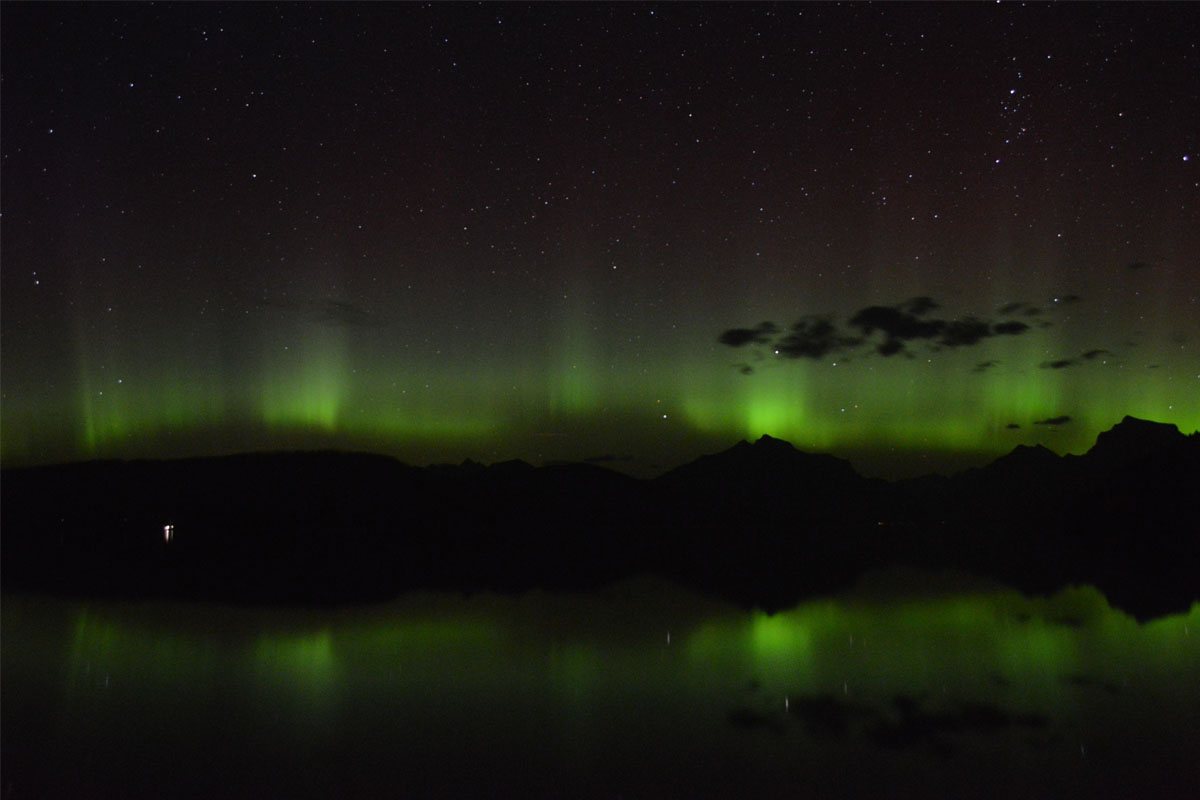
How to Get the Most Out of Your Visit
Keep travel time to the park in mind. It’s five hours by car from Anchorage and two from Fairbanks. Then, consider the time on the park road, it takes six hours by bus to get to the end at Kantishna. The Eielson Visitor’s Center is about four. Allow one full day to arrive, get permits and bus tickets. You'll have to watch an interesting video on bear and backcountry safety to get your permit. They'll also loan you a bear-resistant food container, if needed. Riley Creek Campground is a convenient place to camp the first and last nights, since they take advance reservations.
- Visit Denali in late August for once-in-a-lifetime fall colors that words simply cannot describe.
- The Aurora Borealis is often seen in the park! Best months for the best chances: December through March.
- The backcountry unit system does not apply during the winter and the shoulder-seasons, visitors may camp anywhere.
- Snow is possible literally during any month, be well prepared.
- Photographers should bring wide lenses for views, and long lenses for wildlife. Stony Hill Overlook is a good place to see both. The best chance to see the summit is in the morning, afternoons bring clouds.
- Be conservative with distance/time estimates. Since most of the hiking is off-trail, travel is much, much slower.
- In June, the sun sets around midnight and rises around 4 am, and it never really gets dark, bring an eye mask for better sleep.
For more activities, check out our guide on things to do in Denali National Park.
Written by Shaine Smith for RootsRated and legally licensed through the Matcha publisher network. Please direct all licensing questions to [email protected].


